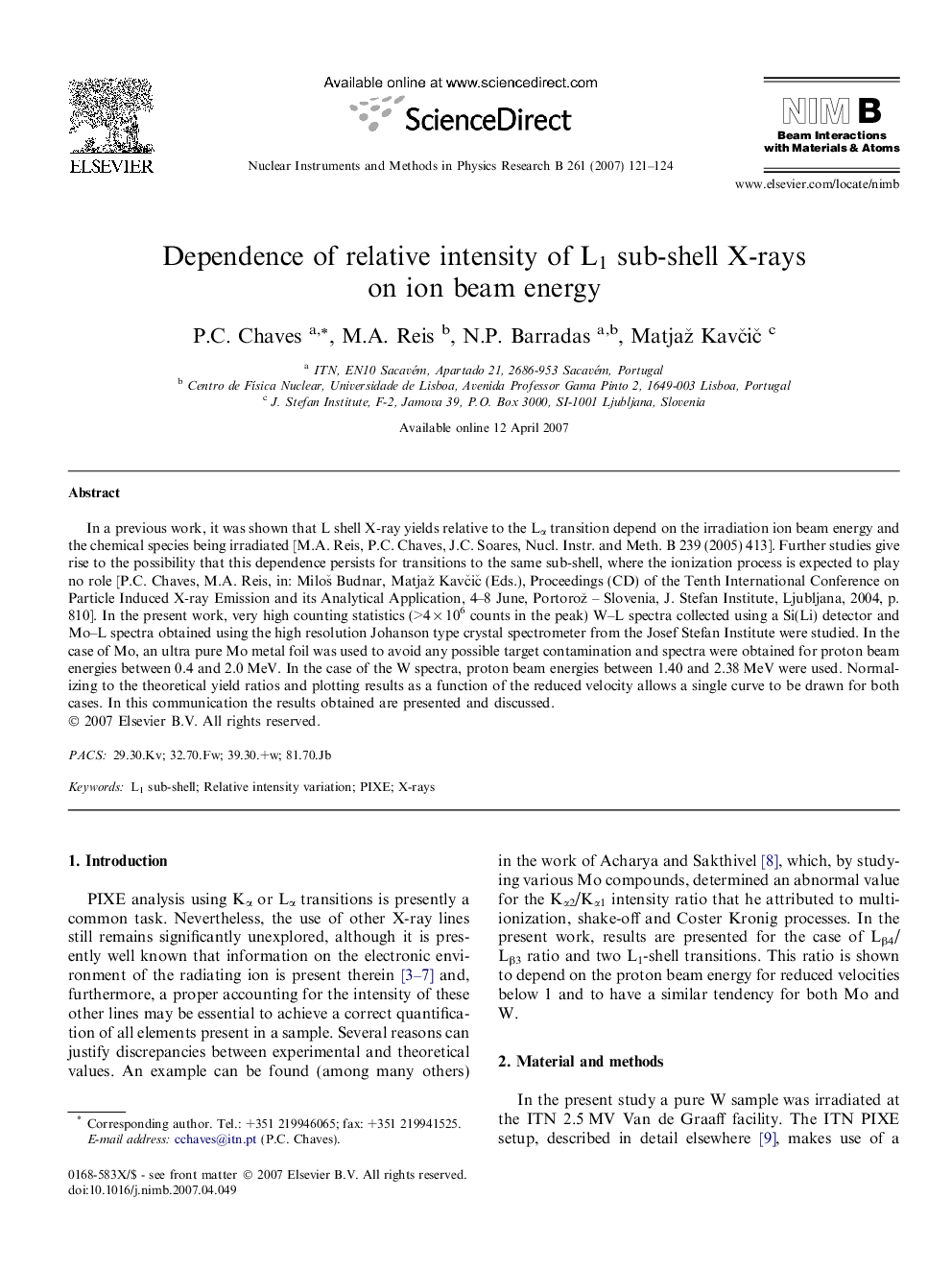| Article ID | Journal | Published Year | Pages | File Type |
|---|---|---|---|---|
| 1685662 | Nuclear Instruments and Methods in Physics Research Section B: Beam Interactions with Materials and Atoms | 2007 | 4 Pages |
Abstract
In a previous work, it was shown that L shell X-ray yields relative to the Lα transition depend on the irradiation ion beam energy and the chemical species being irradiated [M.A. Reis, P.C. Chaves, J.C. Soares, Nucl. Instr. and Meth. B 239 (2005) 413]. Further studies give rise to the possibility that this dependence persists for transitions to the same sub-shell, where the ionization process is expected to play no role [P.C. Chaves, M.A. Reis, in: MiloÅ¡ Budnar, Matjaž KavÄiÄ (Eds.), Proceedings (CD) of the Tenth International Conference on Particle Induced X-ray Emission and its Analytical Application, 4-8 June, Portorož - Slovenia, J. Stefan Institute, Ljubljana, 2004, p. 810]. In the present work, very high counting statistics (>4 Ã 106 counts in the peak) W-L spectra collected using a Si(Li) detector and Mo-L spectra obtained using the high resolution Johanson type crystal spectrometer from the Josef Stefan Institute were studied. In the case of Mo, an ultra pure Mo metal foil was used to avoid any possible target contamination and spectra were obtained for proton beam energies between 0.4 and 2.0 MeV. In the case of the W spectra, proton beam energies between 1.40 and 2.38 MeV were used. Normalizing to the theoretical yield ratios and plotting results as a function of the reduced velocity allows a single curve to be drawn for both cases. In this communication the results obtained are presented and discussed.
Related Topics
Physical Sciences and Engineering
Materials Science
Surfaces, Coatings and Films
Authors
P.C. Chaves, M.A. Reis, N.P. Barradas, Matjaž KavÄiÄ,
